Gray's Reef Competition Brings the Deep Blue Sea
to Chatham County Aquatic Center's Pool
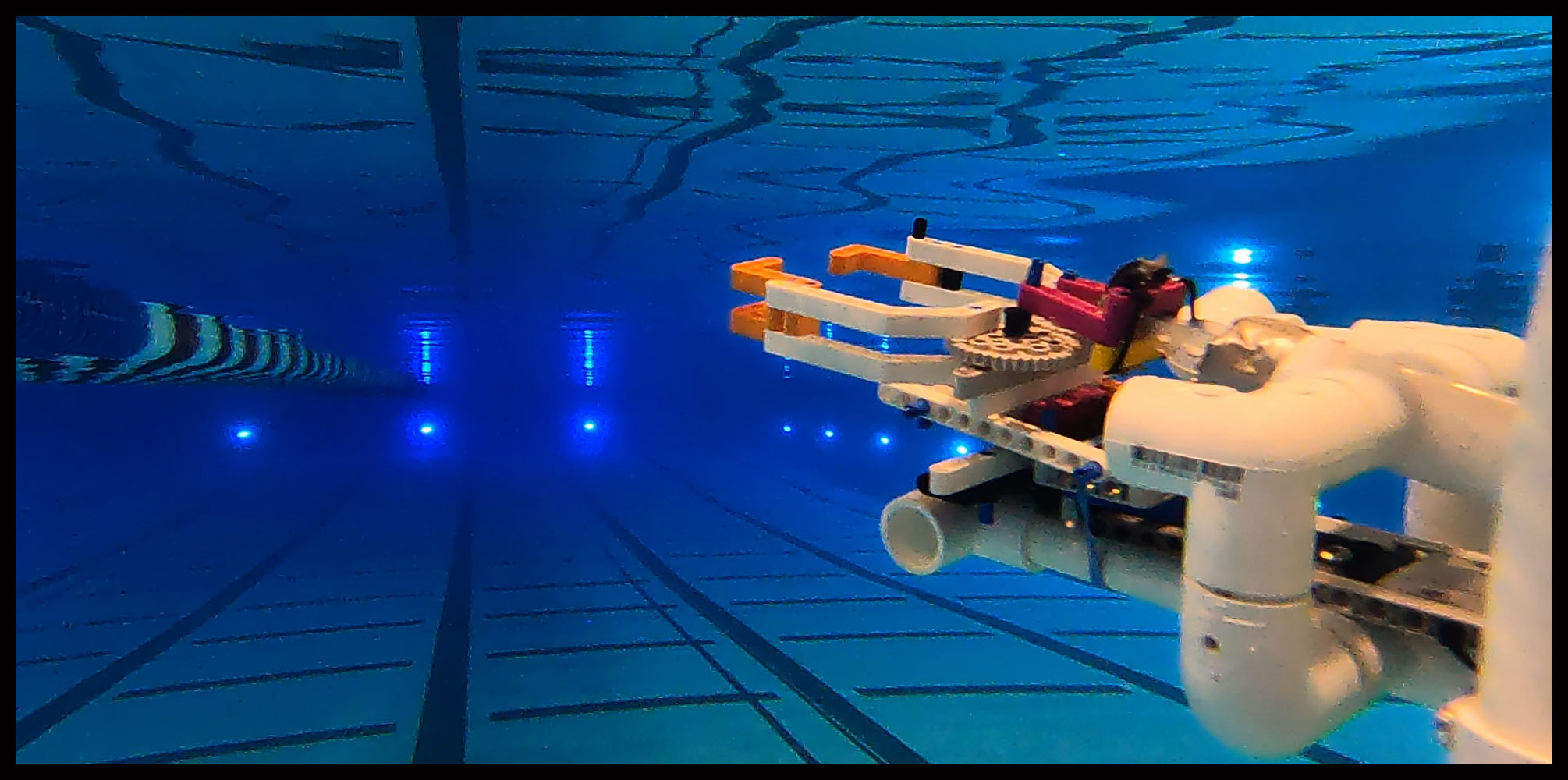
Underwater Robotics Team Competition
Gives Students Deeper Understanding of Science and Technology
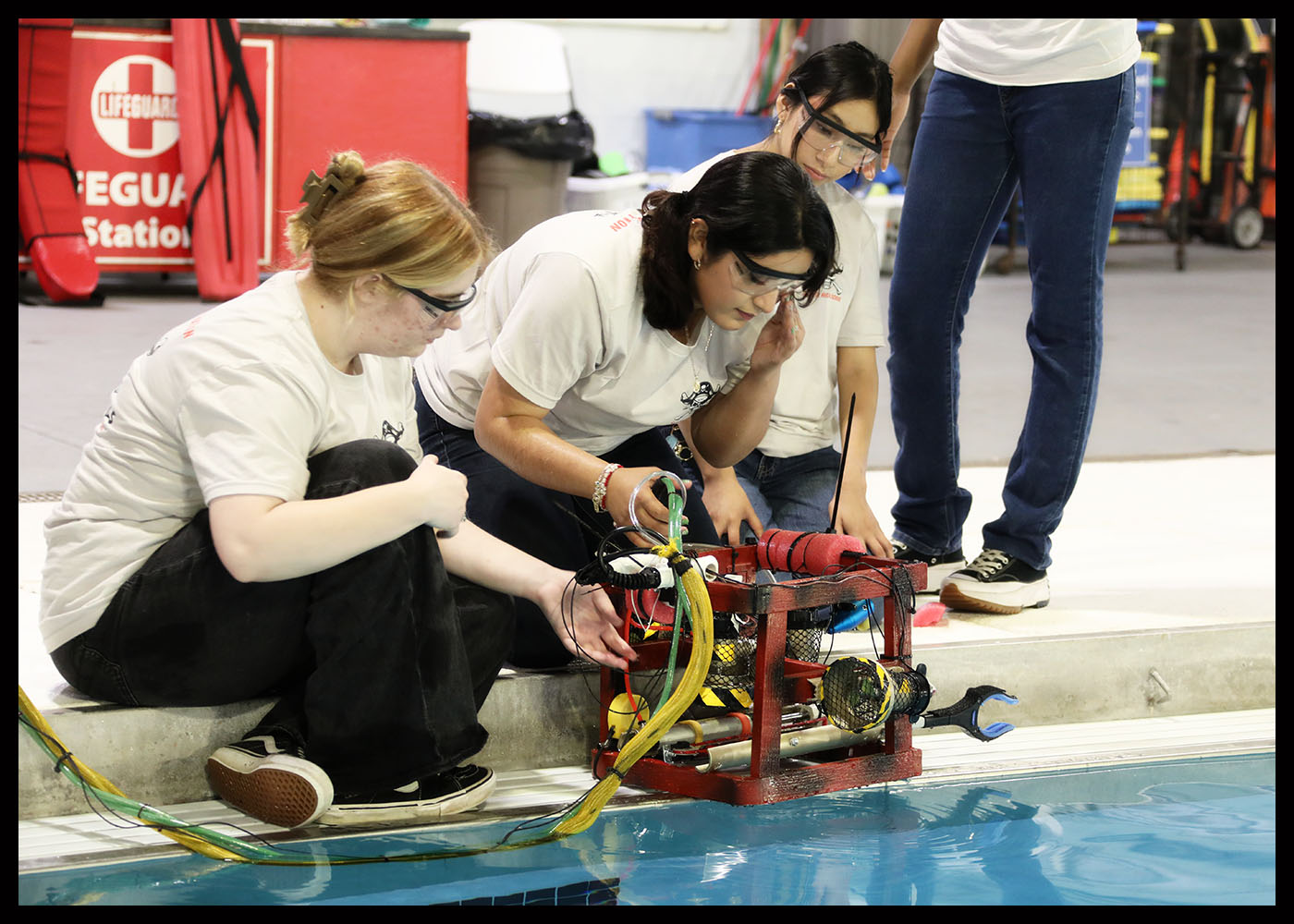 Chatham County’s Aquatic Center is often the host venue for competitive events. Two months ago, teams of highly focused elite young athletes in spandex and swim goggles raced for medals and for personal best times, hoping to advance to the NATIONAL Championships. This month, teams of highly focused bright young minds in hoodies and protective glasses tinkered and problem-solved and raced the clock, hoping to advance to the WORLD Championships. It was a completely different kind of pool party.
Chatham County’s Aquatic Center is often the host venue for competitive events. Two months ago, teams of highly focused elite young athletes in spandex and swim goggles raced for medals and for personal best times, hoping to advance to the NATIONAL Championships. This month, teams of highly focused bright young minds in hoodies and protective glasses tinkered and problem-solved and raced the clock, hoping to advance to the WORLD Championships. It was a completely different kind of pool party.
Gray’s Reef National Marine Sanctuary and Gray’s Reef National Marine Sanctuary Foundation host the event. The 2025 Southeast Regional underwater robotics competition was a poolside (and pool bottom) display of technology, strategy, innovation, and teamwork. The MATE (Marine Advanced Technology Education) Center and the MTS (Marine Technology Society) created the annual ROV (Remotely Operated Vehicle) competition in 2004.
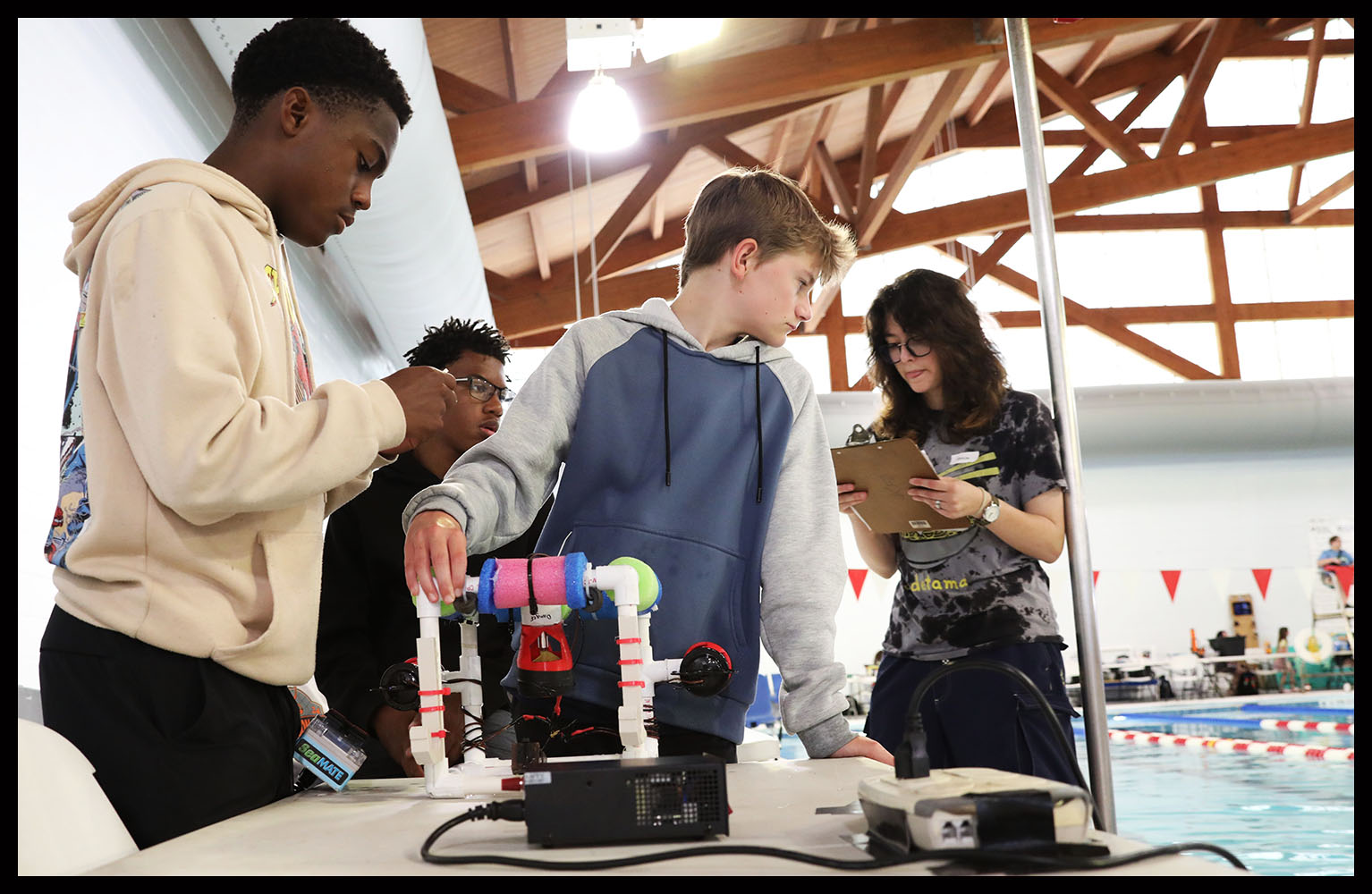
This year, fourteen teams of middle or high school students travelled to the Aquatic Center with the ROVs of their own design and construction. Each team’s mission was to work seamlessly together to put their technological creations through all the required paces. This year’s challenges involved renewable energy, hydrophones, and solar panels.
Competition challenges begin before the teams even travel to the regional competition, however. Each team creates a maritime robotic services company identity, such as North Paulding High School’s WhaleTech, Metter High School’s Black Pearls, and local Tybee Island Maritime Academy’s Tidal Titans. They submit company spec sheets providing technical and problem-solving documentation. They detail project missions, design rationale, and costs, among other things. They produce marketing displays to convey the scope of their company’s vision and capabilities. These displays are judged by professional marketing 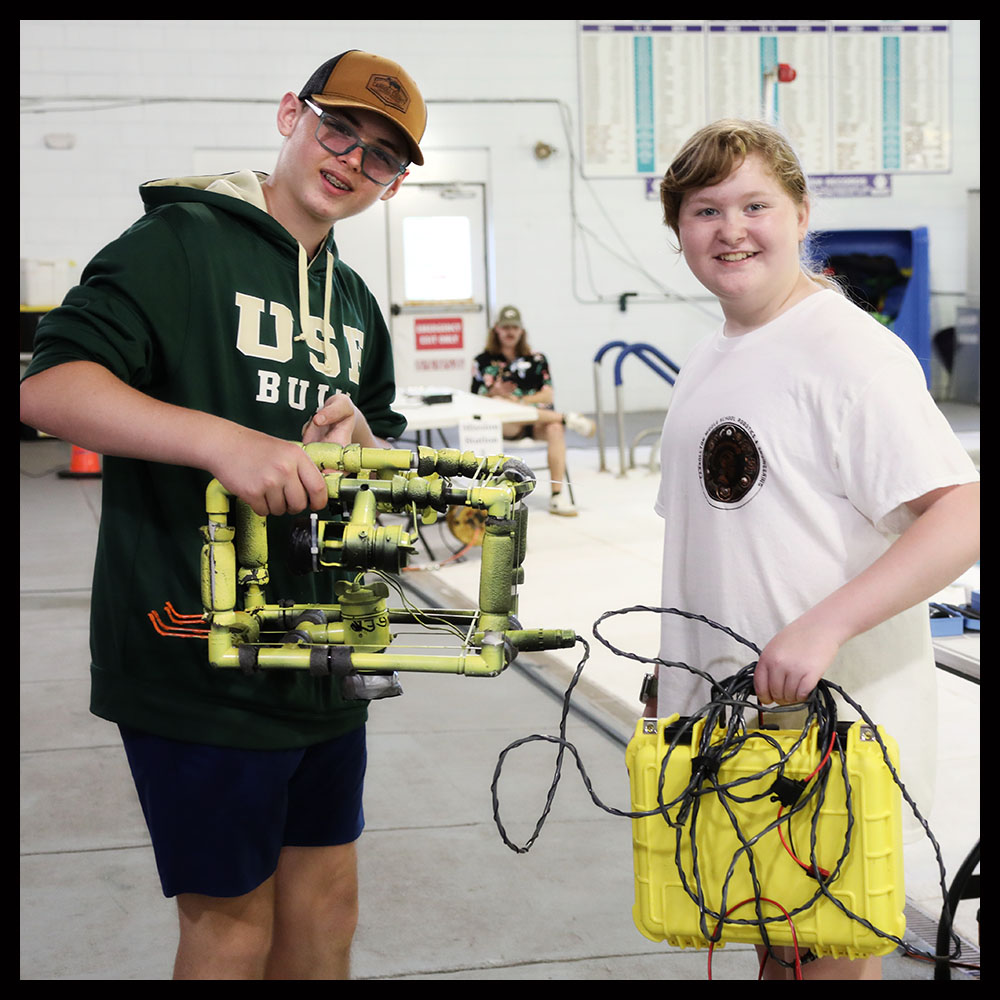 directors at the competition.
directors at the competition.
Likewise, each team is judged on their presentation of the product they have designed and created. They stand before engineering professionals to demonstrate their ROV and explain their process and their teamwork. Before they can ever take their place at one of the Mission Stations, they must pass required safety inspections, too, because . . . safety.
And then the 3D-printed, zip-tied and duct-taped wonders dive to the bottom of the lap pool to show their stuff. The team members man their stations, feeding hoses and power lines, monitoring remote screens, twitching joy-sticks, relaying info, and recording data. The timed, specific challenges are designed to demonstrate strategic problem solving and technical competency. The advanced Ranger Team(s) with the highest scoring proficiency overall will be headed to the World Championships in June. This year WhaleTech took first place and Black Pearls a close second.
Gray’s Reef, MATE, and MTS “challenge students from all over the world to design and build ROVs to tackle realistic missions modeled after actual scenarios  from ocean exploration and maritime industry services.” In a world where STEM (Science, Technology, Engineering, and Mathematics) education and skill-building is at a premium, every team-member involved in the ROV competition scores a win. So, too, do the maritime industries that can benefit from their skills in the future.
from ocean exploration and maritime industry services.” In a world where STEM (Science, Technology, Engineering, and Mathematics) education and skill-building is at a premium, every team-member involved in the ROV competition scores a win. So, too, do the maritime industries that can benefit from their skills in the future.
“We want our students to find relevance in their education. We’re a maritime academy and this is a maritime-themed competition, so having kids think about future maritime careers and having students work on underwater robots is incredibly helpful.”
Computer Science and Engineering teacher John McDonald covers concepts of electricity and hydrodynamics every day in his Physical Sciences classes at Tybee Island Maritime Academy (TIMA). He sees it come alive for his students, though, through the hands-on experience of designing, building, and operating something that actually works because they truly understood the principles involved.
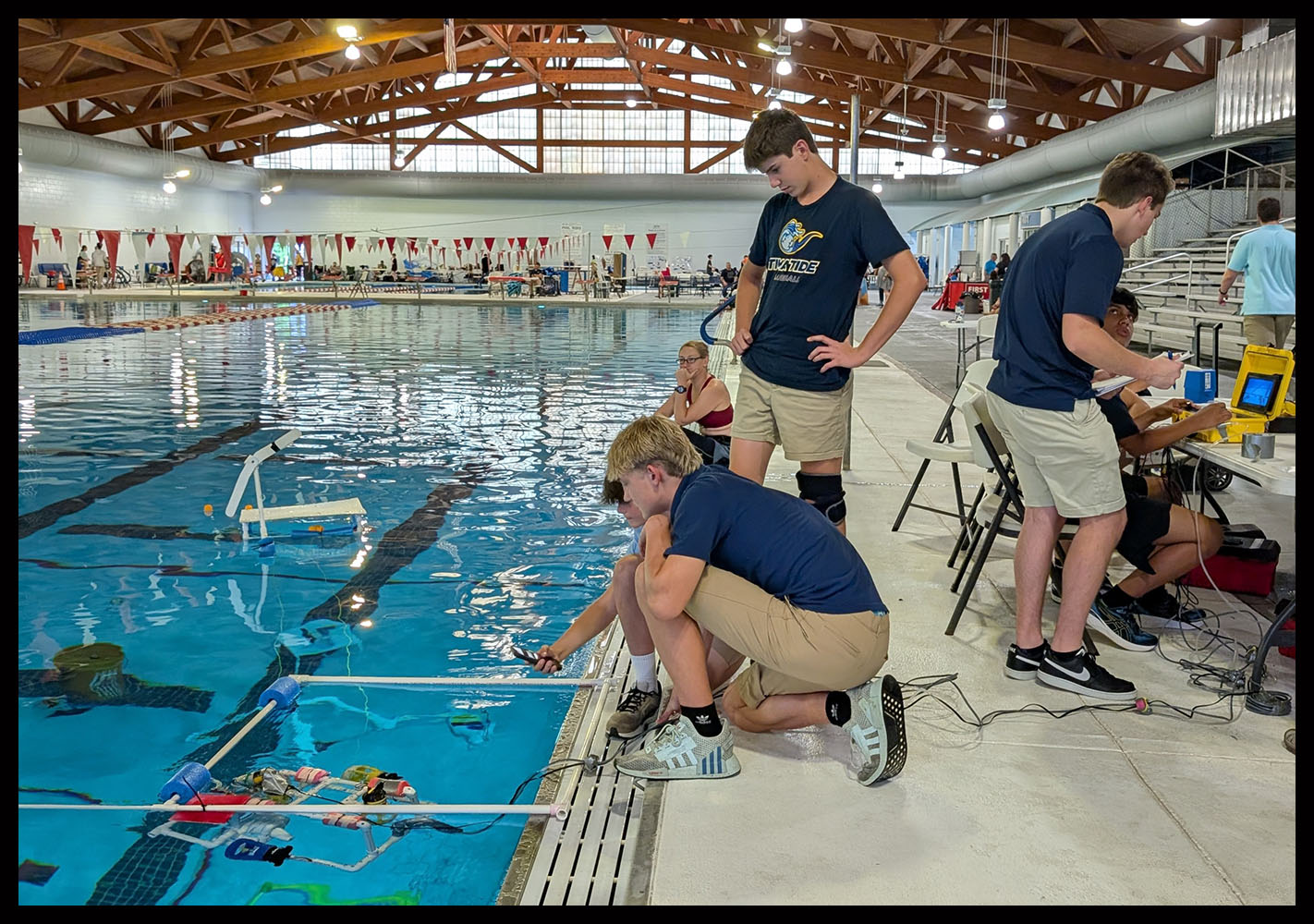
“We’re preparing kids through project-based learning for the real world. A lot of what our school does is take the abstract and make it relevant for them. These kids enjoy working together with their friends and making something that’s their own. They get to learn to design and problem-solve and solder and use power tools. They learn about the ocean and about monitoring problems the maritime industry is facing. They're thinking about how our school can help solve those problems and how they are becoming future leaders.”



